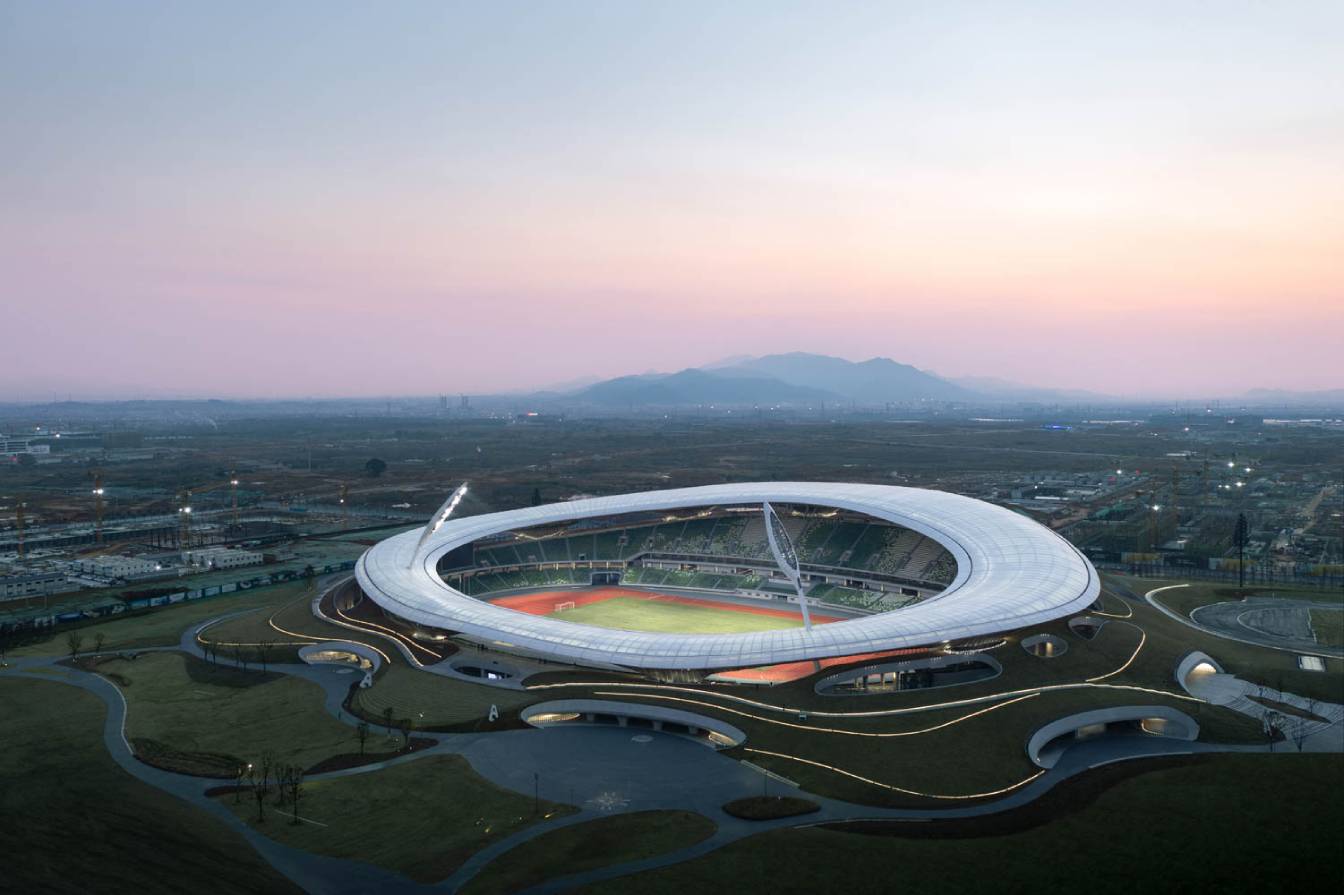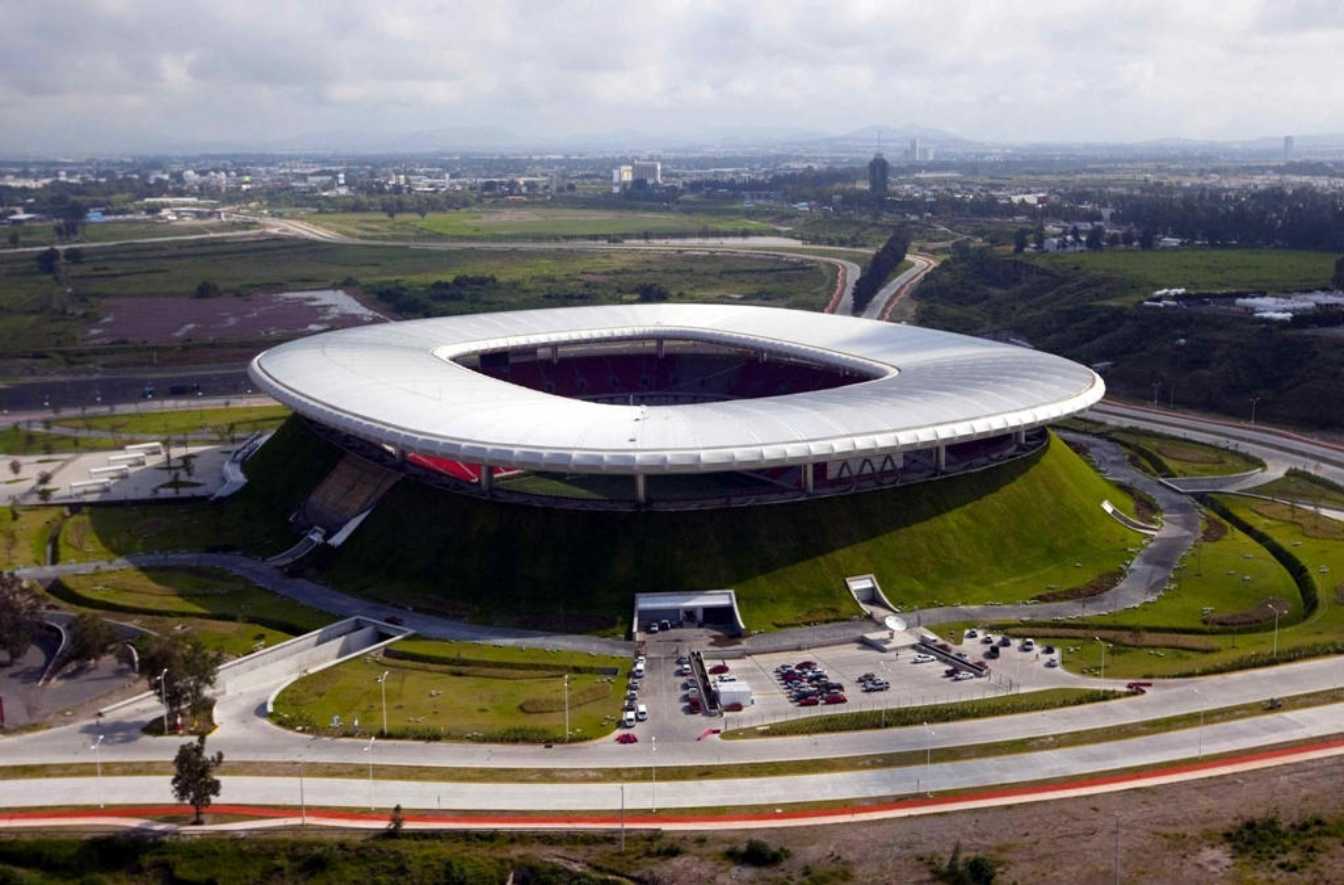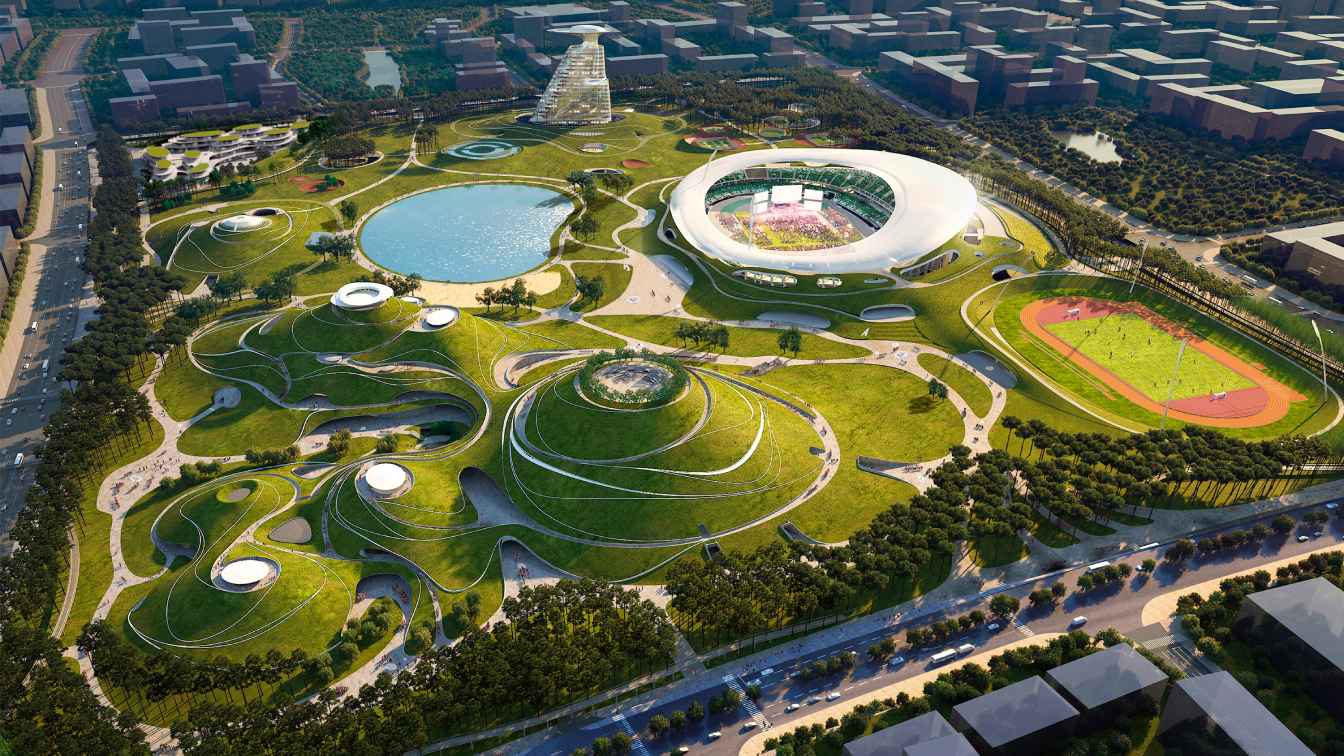China: An underground stadium out of this world
source: StadiumDB.com; author: Kuba Kowalski
 This is how the facility that has been built in the Chinese city of Quzhou can be described. The infrastructure's occupation of the vast area is intended to fit in with the picturesque surroundings of the mountainous Zhejiang province.
This is how the facility that has been built in the Chinese city of Quzhou can be described. The infrastructure's occupation of the vast area is intended to fit in with the picturesque surroundings of the mountainous Zhejiang province.
Advertisement
The new stadium generation?
The futuristic concept brought to life by Chinese architects in 2021 is a resort full of sports and recreational areas. From a distant perspective it may seem like a couple of hills. However, when the first people entered the Quzhou Sports Campus, it became apparent that every point hides a building, including the largest element - Quzhou Stadium.
The entire sports centre covers more than 600,000 m², becoming one of the most interesting facilities of its kind in the world. The design is made in such a way that a large part of the site is placed underground. This arrangement allows the landscape of Quzhou to be exposed and to 'blend' better with the surroundings.
More than just a football temple
Quzhou Sports Campus is the work of MAD Architects, an internationally recognised brand founded in 2004 by Chinese architect Ma Yansong. His creative vision strives to achieve a perfect balance between natural and urban environments. For this project, too, he pays attention to detail to seek harmony with nature through architectural concepts.
The entire facility and the stadium itself, according to Ma Yansong, resembles alien planets that became famous thanks to science fiction literature. Nine entrances lead to the 30,000-seat auditorium, and elements of the structure are curved so that spectators get the impression of waving.
 © CreatAR Images / MAD Architects
© CreatAR Images / MAD Architects
Quzhou Stadium covers an area of 34 000 m². However, in addition to the stadium, the entire complex includes a gymnasium seating up to 10 000 people, a swimming pool and a shopping centre. Although the centre is made up of underground attractions as well, sunlight gets into each of these places.
Innovative, but not the first
Despite its uniqueness on a global scale, the facility is somewhat reminiscent of Estadio Akron, an arena located in the Mexican city of Zapopan. A similar feature is the artificial hill that has been placed at the back of the stands. Concrete slabs were poured there, which were then covered with 70 000 m² of grass. The architects' idea can be compared to a modern concept from the east, as the aim was also to make the facility fit seamlessly into the surrounding landscape. According to some, the Mexican facility resembles a volcano and the red stands - a crater.
 © rodro85 - Estadio Akron
© rodro85 - Estadio Akron
This is also the nomenclature used by the designers of the Chinese arena. According to their idea, the interior is meant to recall the futuristic crater of a volcano on another planet. However, the rest of the solutions do not reflect the Mexican pioneer of symbiosis with nature. In Quzhou, attention is also drawn to the canopy.
It is constructed from a steel frame, but it appears lightweight thanks to a light-transmitting synthetic polymer membrane. Wrapped around the lower half of the structure and supported by micro-perforations, it improves the acoustics of the entire stadium. On the other hand, the upper surface of the canopy consists of a more robust material that prevents rain from entering the auditorium.
Advertisement

 StadiumDB
StadiumDB